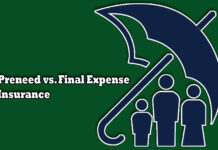What is dividend-paying whole life insurance? Can a life insurance policy do more than just provide a death benefit? Most people think of life insurance as just a safety net to protect their loved ones in case something happens to them.

It’s a way to ensure that their family’s financial future is secure, even if they’re no longer around. But what if your life insurance policy could also help you while you’re still alive?
Imagine having a policy that not only provides a death benefit but also grows in value over time, potentially earning you extra money. Sounds too good to be true? It’s not. That’s where dividend-paying whole life insurance comes in.
This type of insurance combines the traditional benefits of life insurance with a savings component, allowing you to build cash value over time.
But what really sets it apart is the potential for dividend payments, which can increase your policy’s value and provide a supplemental source of income.
In this article, we’ll take a closer look at dividend-paying whole life insurance, exploring how it works, its benefits and drawbacks, and whether it might be the right choice for your financial needs.
What Are Dividends In Life Insurance?
Dividends in life insurance refer to payments that some policyholders receive from their insurance company, usually once a year.
These payments depend on how well the company has performed financially. Unlike guaranteed benefits, dividends are not promised, meaning you may or may not receive them.
If the insurance company has a good year in areas like investment returns, claims handling, and operational efficiency, they may distribute dividends to policyholders. However, if the company does not perform well, dividends may not be paid out.
Whole life insurance policies that offer dividends are called participating policies. Policyholders who receive dividends have different options for using them.
The money can be taken in cash, used to reduce future premiums, or even applied toward purchasing additional insurance coverage.
Since dividends are usually seen as a return of overpaid premiums rather than income, they are not considered taxable.
How Dividend-Paying Whole Life Insurance Works
Dividend-paying whole life insurance provides lifelong coverage along with other financial benefits. It includes a guaranteed death benefit, cash value growth, and the potential to earn dividends.
The dividends paid to policyholders depend on how well the insurance company has managed its finances throughout the year. If the company has a successful year, policyholders may receive a dividend payment.
One key feature of this type of insurance is the cash value component. Over time, your policy builds cash value, which you can use in various ways.
You can borrow against it, use it to pay premiums, or invest it in additional insurance coverage. How you use your dividends depends on your financial goals and the terms set by your insurance provider.
Are Life Insurance Dividends Taxable?
In most cases, life insurance dividends are not taxable. The reason is that they are considered a refund of excess premiums rather than income.
However, if you allow your dividends to accumulate interest within the policy, any interest earned may be subject to taxation.
To avoid this, many policyholders choose to withdraw their dividends as cash, use them to pay premiums, or reinvest them elsewhere.
Options For Using Life Insurance Dividends
If you receive dividends from your whole life insurance policy, you have several options for using them. These include:
- Taking the dividends as cash.
- Using them to reduce your policy premiums.
- Applying them toward paying off a policy loan.
- Leaving them in the policy to earn interest.
- Buying additional paid-up life insurance coverage.
- Purchasing a term insurance rider for extra protection.
Your choice will depend on your financial situation and long-term goals.
Pros Of Dividend-Paying Whole Life Insurance
There are many advantages to having a whole life insurance policy that pays dividends. These include:
- Extra income
- Financial security
- Cash value growth
- Higher coverage
- Tax benefits
- Policy loan options
- Peace of mind
Cons Of Dividend-Paying Whole Life Insurance
Despite its advantages, dividend-paying whole life insurance has some drawbacks:
- Dividends are not guaranteed
- Higher premiums
- Slower cash value growth
- Limited flexibility
- Potentially lower returns
- Complexity
If you are looking for short-term coverage, dividend-paying whole life insurance may not be the best option. It is essential to evaluate your financial needs before making a decision.
Frequently Asked Questions
Are Dividends Guaranteed?
No, dividends are not guaranteed. They depend on the financial performance of the insurance company. If the company has a poor financial year, policyholders may not receive dividends.
What Happens If I Surrender My Policy?
If you surrender your whole life insurance policy, the insurance company will pay you the accumulated cash value. However, you may have to pay surrender charges, and you will lose any future death benefits and dividends.
How Do I Choose The Right Insurer For Dividend-Paying Whole Life Insurance?
When selecting an insurance company, research their financial stability and reputation. Look at their dividend payment history, customer reviews, and policy terms.
A financially strong company with a solid track record of paying dividends is usually a good choice.
Final Thoughts
Dividend-paying whole life insurance offers a combination of protection and financial benefits. While dividends are not guaranteed, they can provide additional income and help you grow your policy’s value.
Before purchasing a policy, consider both the benefits and drawbacks to determine if it aligns with your financial goals.
If you prioritize stability, long-term coverage, and potential financial growth, this type of insurance could be a valuable addition to your financial plan.



